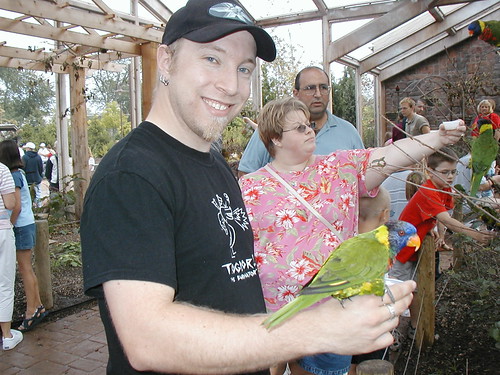A couple weeks ago, I won a free copy of a new field guide, the Smithsonian Field Guide to the Birds of North America. I won the copy by participating in the 10,000 Birds blog giveaway contest, thus saving me $25 I would have otherwise spent on this book. Since I didn’t have to pay for the copy, I figured I would do Smithsonian and Harper Collins a favor and review the book. The first thing to know about this book is that it was compiled by Ted Floyd, the editor of Birding magazine, the official mag of the American Birding Association, and thus has been put together with the membership of the ABA in mind. Each species entry in the book includes its ABA Difficulty Code, and there’s a handy ABA checklist in the back. The guide uses high quality photographs that shows all the most important and visible fieldmarks of the birds. The accounts are mainly placed two to a page in columns. At least two photos are included for each account, focused on depicting the main plumage differences that the species displays. Some accounts have further photos showing species in flight as well. Under the photos is a line with the measurements for wingspan, length and weight, followed by a set of three information lines about the plumage, including number of molts, degree of difference between sex and age related molts, and any variations in plumage. Under the plumage information is a section with a short descriptive paragraph about the species, its nesting and breeding habits and range along with a range map. Finally, a concluding section briefly describes the vocalizations of the bird. This guide does a great job of cramming a lot of information into concise, clear packets. The guide isn’t as comprehensive as the National Geographic Field Guide to the Birds, as it seems to mainly include only those birds that breed or are common vagrants within the ABA area, and doesn’t include rare but increasing vagrants, such as Green Violet-ear or Green-breasted Mango. Granted, the omissions seem most evident with the southwestern hummingbirds, but it still sticks out.
Another interesting feature of the guide is the inclusion of a bird song DVD with vocalizations for 138 species, totaling 587 mp3 files. The files are intended for download onto a portable mp3 player, which I suppose is a sign of the ubiquity of these devices in birding culture (although I have yet to pick one up). While the inclusion of the DVD is a great idea, I do agree with other reviewers that it would have been more useful to include sound files for ALL of the species in the guide, at the sacrifice of the variety of vocalizations. The DVD includes many very common species, but there’s some weird omissions – Willow Flycatcher is included, but none of the other common Empidonax flycatchers that are virtually indistinguishable from Willow Flycatcher – except by voice! I think that while the idea is great, by not including an mp3 file for every bird in the book, the concept falls flat. It’s nice to have the short perch songs, dawn song, dawn flight song, and calls from two different regions for Tree Swallow, but the limited number of species on the disc just makes it more frustrating than useful for the experienced birder. The beginning birder, though, might find the disc far more useful, since the multitude of calls included for common species may be very handy in developing the skills of birding by ear. I personally am going to stick with Sibley’s regional guides for my main field guides, but I think that the Smithsonian field guide will make an excellent back up field guide. The photographs are much clearer than the paintings in the National Geographic guide, and this guide is the equal of the National Geographic guide in everything except for comprehensiveness.


1 comment:
Hi there
Can I link to this post please?
Post a Comment